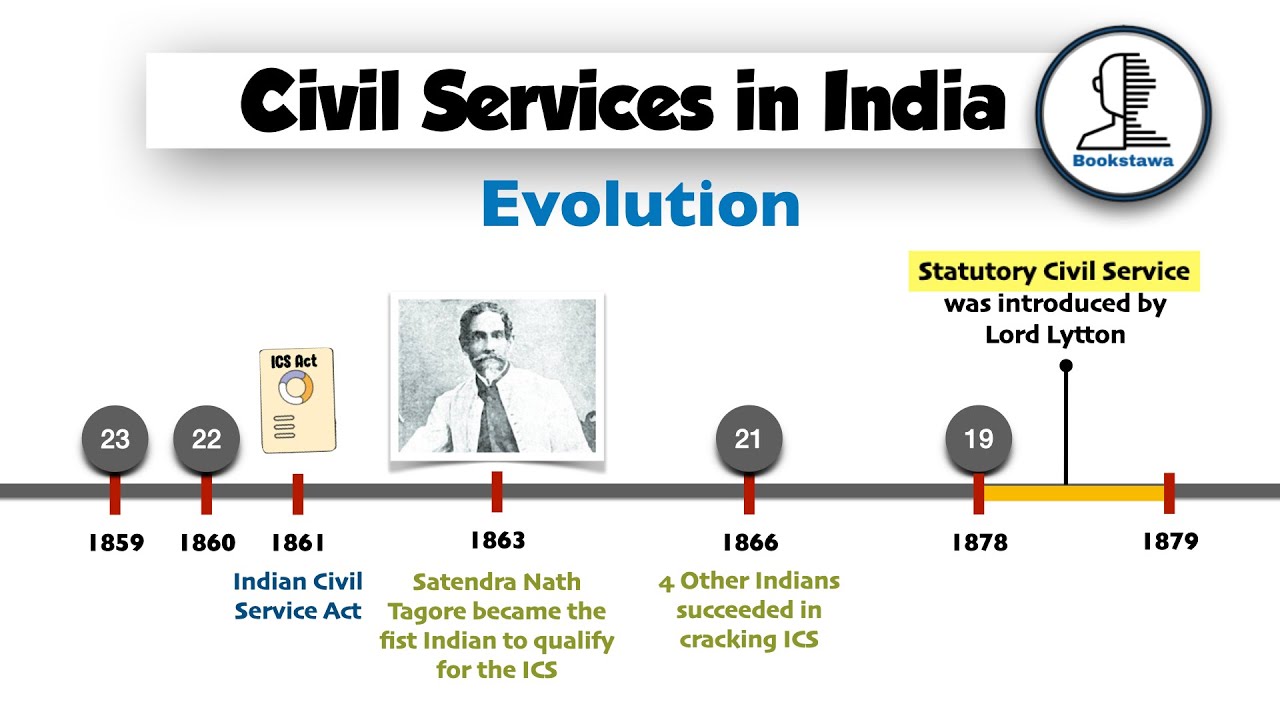
Evolution of Civil Services in India
Evolution of Civil Services in India
Civil Services in Ancient India
The Indian civil service system is one of the oldest administrative systems in the world. It had its origin in the Mauryan period during ancient India. Kautilya's Arthashastra lays down the principles of selection and promotion of the civil servants, the conditions of loyalty for appointment to the civil service, the methods of their performance evaluation and the code of conduct to be followed by them.
Civil Services in Medieval India
In medieval India, the Mughals set up their own civil service systems which centred on the management of land revenue, administration of government factories and establishment of the patrimonial state. During this period, Akbar founded and nurtured the civil service. During his period, he initiated land reforms (1457 AD), and established the land revenue system which later became a major constituent of the Indian taxation system. His civil service had welfare and a regulatory orientation.
Civil Services in Colonial Era
The East India Company had a civil service specifically responsible for carrying out commercial functions. They were detached from the common people. Initially it was part of the police state with its main task being that of carrying out law and order functions. The office of the District Collector was created for the first time in 1771 by Lord Warren Hastings. However, it was Lord Cornwallis, who is regarded as the founding father of modern Indian Civil Services. He created police service, judicial service and revenue services, formulated the code of conduct for civil servants and laid down the procedure for their promotion. Indians were barred from high posts from very beginning.
In 1800 Lord Wellesley founded the Fort William College to train civil servants. However, from 1806, the Fort William College was replaced by Hailey Bury College in London to train civil servants. The 1813 Charter Act the office of civil servants as the civil service with an annual salary of 500 ponds. Lord William Bentinck restored, and revived magisterial powers of district collector which was divested by Lord Cornwallis. Charter act of 1853 ended the companies’ patronage and provided for open competition in recruitment. Although theoretically it was made open, but the relevant provisions were never really implemented until 1858.
The British government set up the Indian civil service in 1911. Initially the recruitment to the Indian civil service was confined only to the British. However, due to pressures and demands raised by the Indian National Congress in 1921, Indians were allowed to take the examination. In 1935 the British government decided to establish interim rule in the various provinces of India, which resulted in an exodus of the British subjects as civil servants and as a result, the number of Indian subjects in the Indian civil service increased tremendously. Though initially the British government set up only the Indian civil service, later on they added a statutory civil service and central civil services. In the course of time the statutory civil service was weeded out and there remained on the scene only the remaining two services, namely, the Indian Civil Service and the central civil services.
Civil Services in Independent India
At the time of independence, besides the Indian Civil Service there were nine central civil services in the country. The independence of the country posed new challenges to the civil servants. They were no more expected to perform the role of a police state. The welfare of the Indian subjects was viewed as the central task to be performed by the Indian state and hence they were to be an instrument to carry out welfare functions which, among other things, included the settlement of refugees and providing minimum conditions for their day-to-day living, safeguarding the national borders from external aggression and promoting conditions responsible for internal peace.
Under this concept, civil service posts are grouped into distinct homogenous cadres under a common Service named on the basis of specific functions attached to the posts in question.
The various Civil Services at the Union and State levels can be classified in different ways.
- Firstly, they can be categorized into three broad groups –Central Civil Services, All India Services and the State Civil Services. The Central Services function under the Union Government and are generally engaged in administering subjects which are assigned to the Union under the Constitution. All India Services are common to the Union and the States and the State Services function only under the State Governments respectively.
- Secondly, the Union and State Services can be classified into Group A, B and C categories based on their role and responsibilities.
- Thirdly, these can also be classified into technical and non-technical services. E.g. Indian Administrative Service as non-technical and Indian Economic Service as technical service.